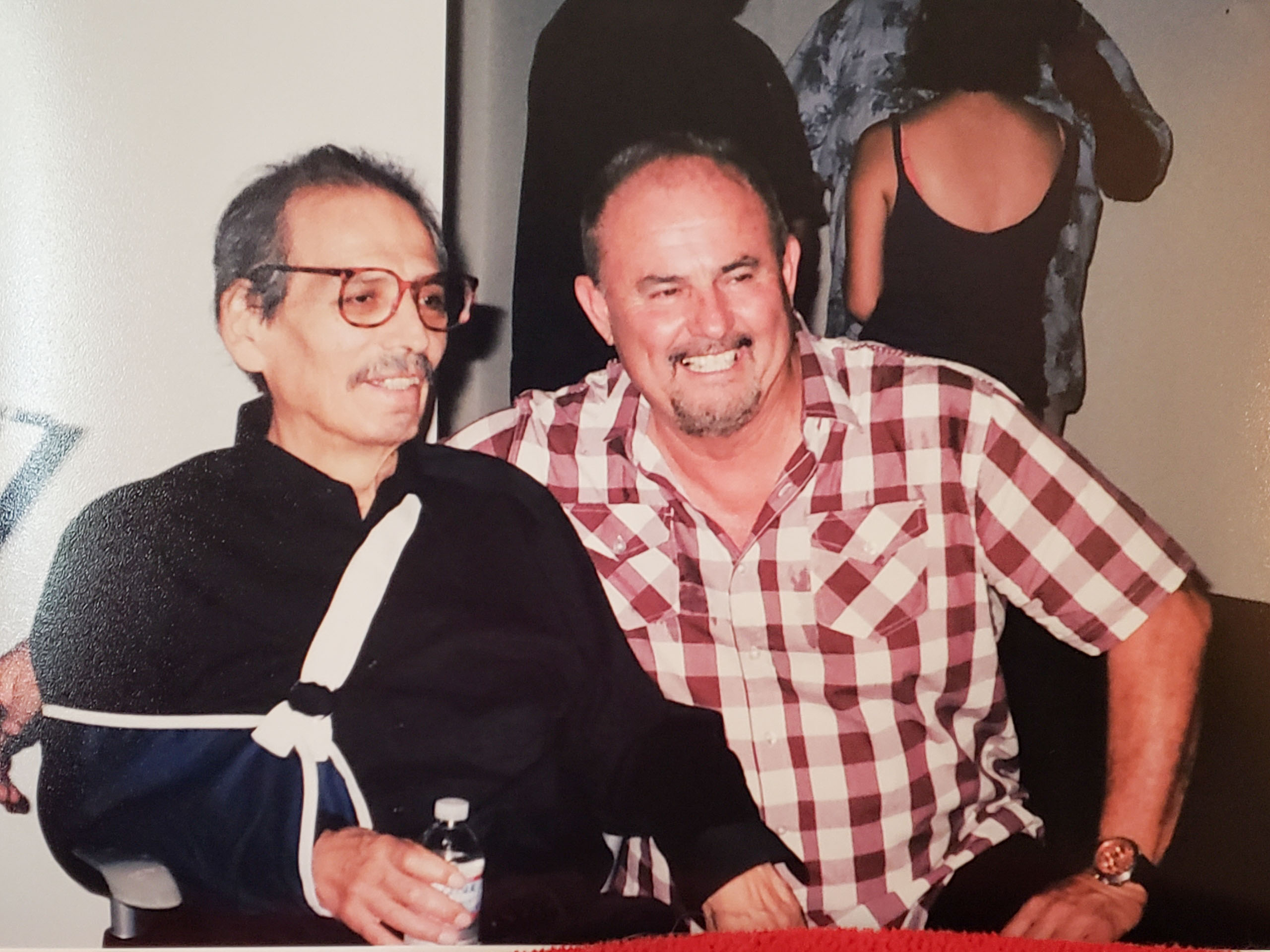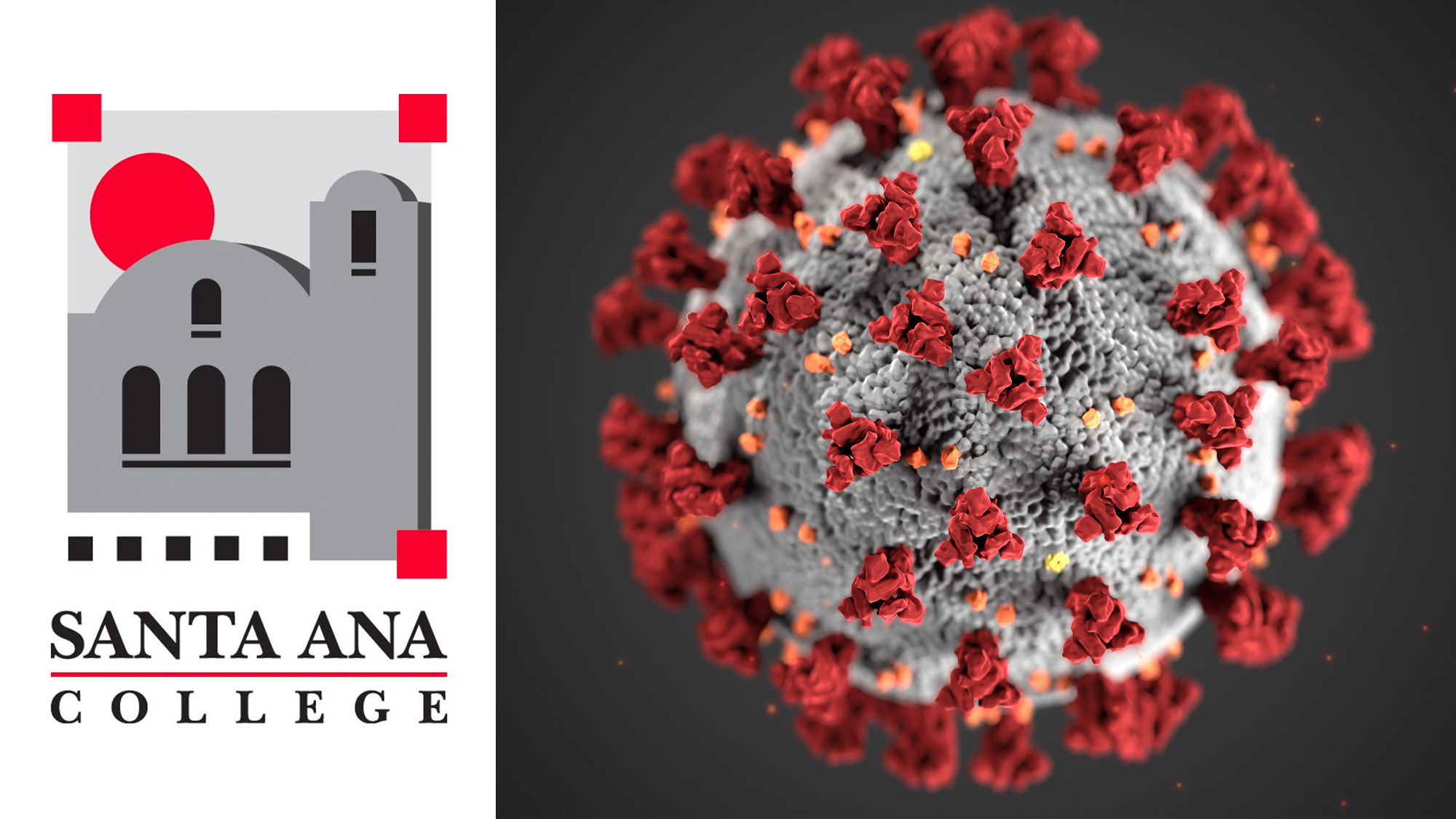Seven young Chicano men dressed in white dress shirts stand close to one another in a sunny park. One is wearing a tie and two have suspenders. All are wearing nice slacks with creases, They are clean-shaven with neatly slicked-back hair. All are handsome. They are relaxed and enjoying cervezas on what seems a friendly Sunday afternoon. They look in your direction, smirking, as if saying, “You can hang with us. This is our place.”
The young men aren’t speaking though, and they aren’t in a park. They have painted figures in an artwork titled “Chavez Ravine Home Boys,” which is one of 41 pieces in a new exhibition called “Emigdio Vasquez: Works from the Fred Ortiz Collection.”
The show, which is temporarily housed at the Hilbert Museum at Chapman College, celebrates the legacy of Emigdio Vasquez, who is considered the Orange County godfather of Chicano art.
Not far from “Chavez Ravine Home Boys,” a woman takes in an energetic ‘50s-era scene of young Hispanic men and women dancing in Harmony Park Ballroom in Anaheim. The men are wearing zoot suits with large fedoras; they have proud grinning faces. The women are wearing colorful, tight-fitting dresses. They’re smiling and swaying to the music, completely lost in the moment. You can feel the heat and hear Fats Domino thumping from the speakers.
A woman staring at the 36” x 20” oil painting says that her parents met at that same ballroom in Anaheim. She smiles as she recites the story. Another fellow says that his father and mother went dancing there as well and would listen to Mel Torme, the popular singer, and composer nicknamed “the Velvet Fog.” He laughingly shares that Torme kissed his mother and that she always enjoyed telling this story.
Angelina F. Veyna, Professor of History at Santa Ana College met Vasquez while he was painting the Cesar Chavez mural that now graces the Cesar Chavez Building. She commissioned him to paint a portrait of her father as a farm worker from a photo she had of him. What she remembers most about the portrait was her father’s clothing, which she used to iron for him. The painting now hangs in her living room.
“I think the exhibit is very critical, in understanding the Chicano community of Orange County,” said Professor Veyna. “It’s very valuable not just to recognize him as one of the great artists of the nation, but of California, and we claim him for Orange County.”

Each of the 41 paintings in the two galleries is owned by Fred Ortiz, a former pipefitter who started collecting Chicano art after encountering Vasquez’s artwork.
“I first met Emigdio in 1995 at the Martinez Book Store in Santa Ana,” said Ortiz. “I saw his painting Mike’s Pool Hall and knew I had to buy it…I promptly offered to purchase the painting but he refused to sell it. However, a few weeks later Emigdio changed his mind, and I bought it.”
Ortiz would go on to purchase many more of Vasquez’s paintings and now owns the largest collection of the artist’s work. The two even became close friends until Vasquez died in 2014.
In a Christmas card written in 1998, Vasquez explained to Ortiz how much he appreciated the support that Ortiz gave him and what a difference it made in maintaining his career.
Vasquez graduated from Santa Ana College and received his bachelor’s degree and master’s degree in fine arts from California State University, Fullerton.
He later taught at Santa Ana College and painted a mural of Cesar Chavez that is in the lobby of the Cesar Chavez building. He was also a professional assistant on the Mecha Mural in the Nealley Library.
Mary Platt, director of the Hilbert Museum, believes that Vasquez is an important artist because he captured the politics and events that impacted Latinos during the ‘70s and ‘80s,, but more importantly, he was a keen observer of everyday lives. This was the theme of many of his paintings.
- New murals by the Madison Park Neighborhood Park Association - May 29, 2024
- The story behind the owner of Teresa’s Jewelers - May 21, 2024
- Chicano artist, Emigdio Vasquez’s legacy lives on at the Hilbert museum - April 4, 2024











